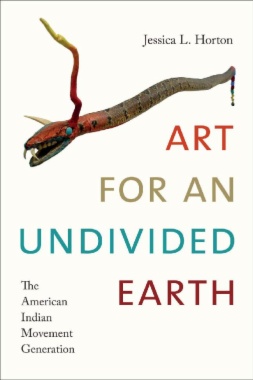In Art for an Undivided Earth Jessica L. Horton reveals how the spatial philosophies underlying the American Indian Movement (AIM) were refigured by a generation of artists searching for new places to stand. Upending the assumption that Jimmie Durham, James Luna, Kay WalkingStick, Robert Houle, and others were primarily concerned with identity politics, she joins them in remapping the coordinates of a widely shared yet deeply contested modernity that is defined in great part by the colonization of the Americas. She follows their installations, performances, and paintings across the ocean and back in time, as they retrace the paths of Native diplomats, scholars, performers, and objects in Europe after 1492. Along the way, Horton intervenes in a range of theories about global modernisms, Native American sovereignty, racial difference, archival logic, artistic itinerancy, and new materialisms. Writing in creative dialogue with contemporary artists, she builds a picture of a spatially, temporally, and materially interconnected world—an undivided earth.
- Cover
- Contents
- List of Illustrations
- Acknowledgments
- Introduction
- One. “The Word for World and the Word for History Are the Same”: Jimmie Durham, the American Indian Movement, and Spatial Thinking
- Two. “Now That We Are Christians We Dance for Ceremony”: James Luna, Performing Props, and Sacred Space
- Three. “They Sent Me Way Out in the Foreign Country and Told Me to Forget It”: Fred Kabotie, Dance Memories, and the 1932 U.S. Pavilion of the Venice Biennale
- Four. “Dance Is the One Activity That I Know of When Virtual Strangers Can Embrace”: Kay WalkingStick, Creative Kinship, and Art History’s Tangled Legs
- Five. “They Advanced to the Portraits of Their Friends and Offered Them Their Hands”: Robert Houle, Ojibwa Tableaux Vivants, and Transcultural Materialism
- Epilogue. Traveling with Stones
- Notes
- Bibliography
- Index
- A
- B
- C
- D
- E
- F
- G
- H
- I
- J
- K
- L
- M
- N
- O
- P
- Q
- R
- S
- T
- U
- V
- W
- Y
- Color Plates

